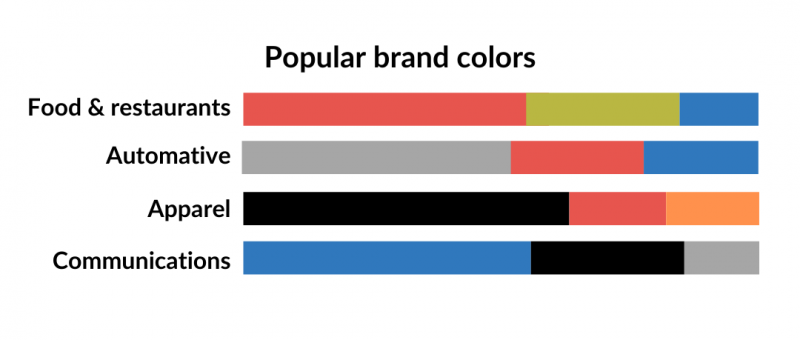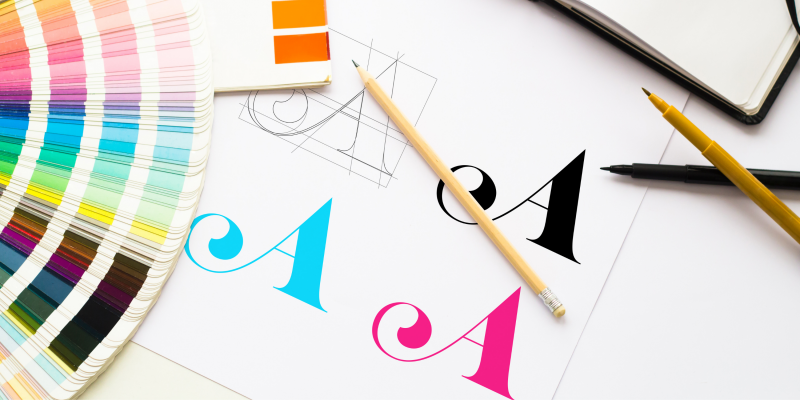When it comes to branding, there is nothing as necessary as to design a logo. Your brand logo is a visual representation of your company, product, or service and should speak volumes about what you’re all about – in a single “picture.” But creating an effective brand logo is easier said than done. The average business will go through dozens of revisions before deciding on their final version, and many will never settle on a logo they are fully satisfied with. Whether you are a big or small company, designing the right logo is key to your success – and could potentially make or break your brand.
How to design a logo? – Table of contents:
- Design a logo with the philosophy in mind
- Top tips for designing a logo
- When in doubt, trust the experts with your logo design
Design a logo with the philosophy in mind
How do you go about getting your logo design right the first time around? Here are a few pointers:
1. Know what you want to say with your logo and don’t forget to put yourself in your customers’ shoes
When creating a logo, there is so much more going on than just choosing which fonts look good together.
Your primary goal should be to convey an idea as quickly as possible and force your audience to ask questions about who you are and what you stand for. Great logos leave viewers wanting more – whether it’s by using colors representing your industry or through hidden messages that prompt people to dig deeper into who you are as a business.
Before setting pen to paper, ask yourself, “What do I want my logo to say about me?” Also, ask yourself, “Am I trying too hard? Is this truly easy-to-identify with?” A good brand should always follow what they set out to accomplish (i.e., is there any confusion about who or what you’re selling?).
By seeing things through your customer’s eyes, you can quickly identify mistakes and issues that might go unnoticed if you are too close to the project.
2. Practice makes perfect in design
Like a painter practicing their craft, designing the perfect logo takes time. Don’t be afraid to experiment and fail – you are allowed to make mistakes along the way (and you will). As long as you learn from your failures, it’s never too late to start over.
3. Pick a color scheme that fits your industry

How often have you bought something for one reason but ended up getting something else because you liked the packaging better?
Whether it’s consciously or not, color is an essential branding tool when creating logos. The colors in your logo should complement each other and reflect how you want your brand to be viewed by customers – whether it’s fun and vibrant, business-like, or professional.
4. Make sure you design a logo that fits with all of your other marketing materials (i.e., business cards, brochures)
Once you’ve gone through this process for once, every future project will be developed significantly faster. You will already know what works and what doesn’t, which means that every next time you will design a logo in a streamlined, efficient process.
Top tips for designing a logo
Here are a few tips to help get you started when it comes time to design a logo for your brand or organization:
1. Use simple shapes
Nothing is worse than having to squint at the details to see a strange shape resembling a letter or number (or something else). Keep things simple using basic shapes like circles, squares, and triangles for memorable logos. Also, design a logo using geometric patterns to create visually stunning designs.
2. Don’t reuse elements from other brands
It’s fine to be inspired by others but avoid copying their work outright. It’s not only disrespectful, but it can lead to potential legal issues if you choose a similar design.
3. It’s worth considering going monochromatic
While some businesses benefit from using multiple colors in their designs, others benefit from using one-color logos. Using just one color allows your brand to stand out while creating an easily identifiable mark.
4. Think outside of the box
If you are looking for something really “outside the box,” you can try to design a logo in 3D. The use of 3D effects might seem risky or unnecessary, but they can be surprisingly effective depending on how well they are integrated into the design.
Still, you may decide to use a logo, which was already designed by somebody else and can be downloaded without charges. You can copy, modify and distribute such logotypes for commercial use without additional permission. For some ideas you may check our Logo Pack, which available for free on the page.
5. Use interesting lettering and fonts

Having a good logo is only part of the battle. To bring your idea down from concept to reality, you have to communicate it in words and images. As you think about how you want your name or slogan displayed, use unique typefaces that can help make an impact without being too distracting.
When in doubt, trust the experts with your logo design
If you’ve reached a point where you feel overwhelmed by your logo design decisions, enlist the help of an expert. Design professionals can guide you through this process and help you design a logo appropriate for your business.
Before hiring a logo designer, do your research to avoid wasting money on a design you could have come up with on your own. Make sure they have references from previous customers so that you know their work is good (and worth it).
Whether they work on a per-project basis or an hourly basis, hiring a professional should help make this part of the process go as smoothly as possible to give yourself time to focus on other aspects of growing your business.
You may also like: How to define and create your brand’s visual identity?
Author: Klaudia Kowalczyk
A graphic & UX Designer which conveys into design what cannot be conveyed in words. For him, every used color, line or font has a meaning. Passionate in graphic and web design.


















